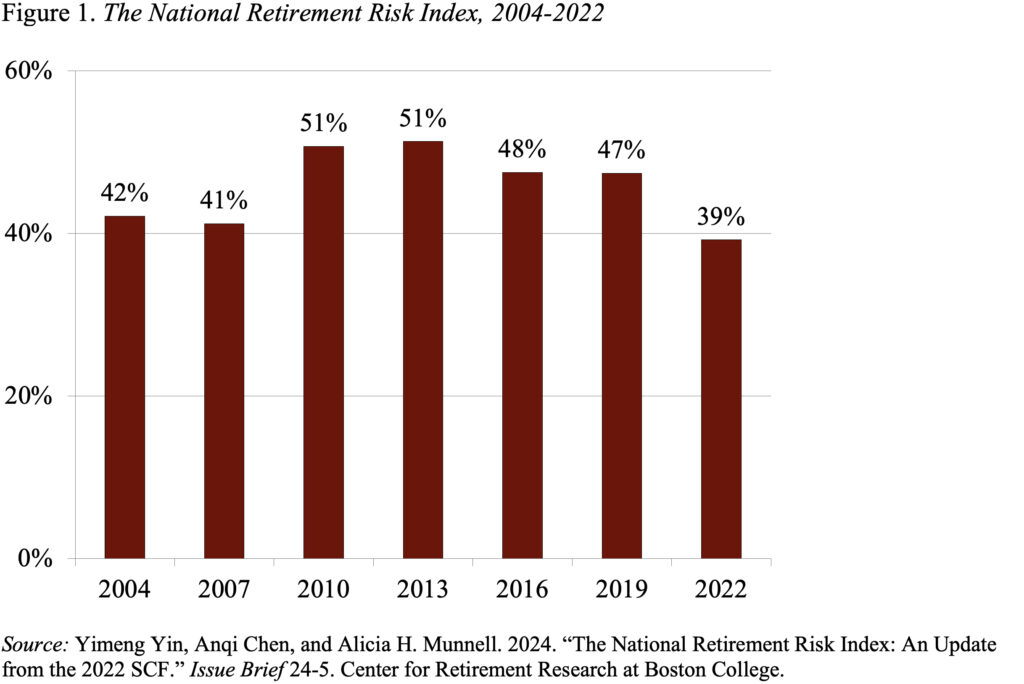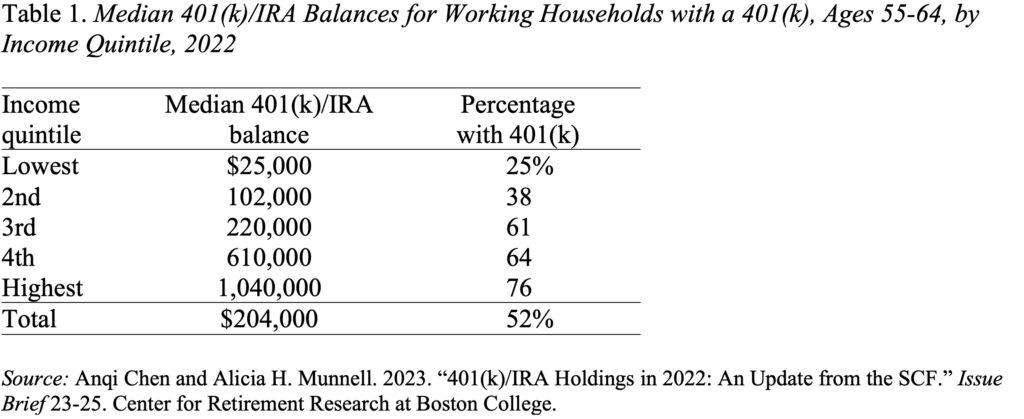The time period doesn’t actually matter, however about half of households usually are not doing so effectively.
Reporters at all times need to know “disaster” or “no disaster.” I don’t suppose the time period is especially vital with respect to retirement safety, however remark after remark paints the identical image – roughly half of households usually are not in good monetary form in retirement.
My greatest gauge of how effectively households are doing is the Heart’s Nationwide Retirement Danger Index, which is predicated on the Federal Reserve’s Survey of Client Funds. The newest estimate reveals that 39 % of right now’s working-age households will be unable to keep up their way of life in retirement (see Determine 1). Distinctive components led to the bottom degree because the NRRI first began – specifically, quickly rising house costs, new financial savings through the pandemic, and robust inventory market beneficial properties. As a few of these extraordinary components fade, the Index will almost certainly return to fluctuating between 40 % and 50 %.

Reinforcing the notion that roughly half of households are in danger is the truth that solely half of working households ages 55-64 have any 401(ok)/IRA saving. Sure, some have outlined profit plans, however most with outlined profit plans even have a 401(ok). Furthermore, the quantities in 401(ok)s/IRAs are fairly modest, aside from the highest quintile of the earnings distribution (see Desk 1). If the couple within the center quintile makes use of their $220,000 to purchase a joint-and-survivor annuity, they are going to obtain about $1,200 per 30 days. Since this quantity shouldn’t be listed for inflation, its buying energy will decline over time. Furthermore, this $1,200 is more likely to be the one supply of extra earnings, as a result of the standard family holds just about no monetary belongings outdoors of its 401(ok).

Regardless of the proof on the contrary, when older households are requested about how they’re faring, the overwhelming majority – 80 % – say they manage to pay for to be doing okay or residing comfortably (see Desk 2). Some interpret the excessive satisfaction ranges as proof that retirement financial savings are sufficient. My guess has at all times been that older persons are reluctant to say they’re doing poorly and simply alter to their monetary state of affairs, no matter it’s.

Some proof that persons are placing on face when requested about their well-being comes from a latest research of regrets. Truly, the authors intentionally averted the time period ‘remorse” and moderately requested: “Fascinated about your saving over your life: do you suppose what you saved was too little, about proper, or an excessive amount of?” The outcomes confirmed that 52 % felt that they’d saved too little. The commonest causes for inadequate saving have been that they lived day after day (29 %) and didn’t plan forward (27 %). The opposite areas of remorse are additionally attention-grabbing (see Desk 3).

The underside line right here is that every one the target proof signifies that between 40 and 50 % usually are not saving sufficient and, when the query is put to retirees in a non-threatening style, about half admit they wished they’d saved extra. So, sure, undersaving for retirement is a severe difficulty.

